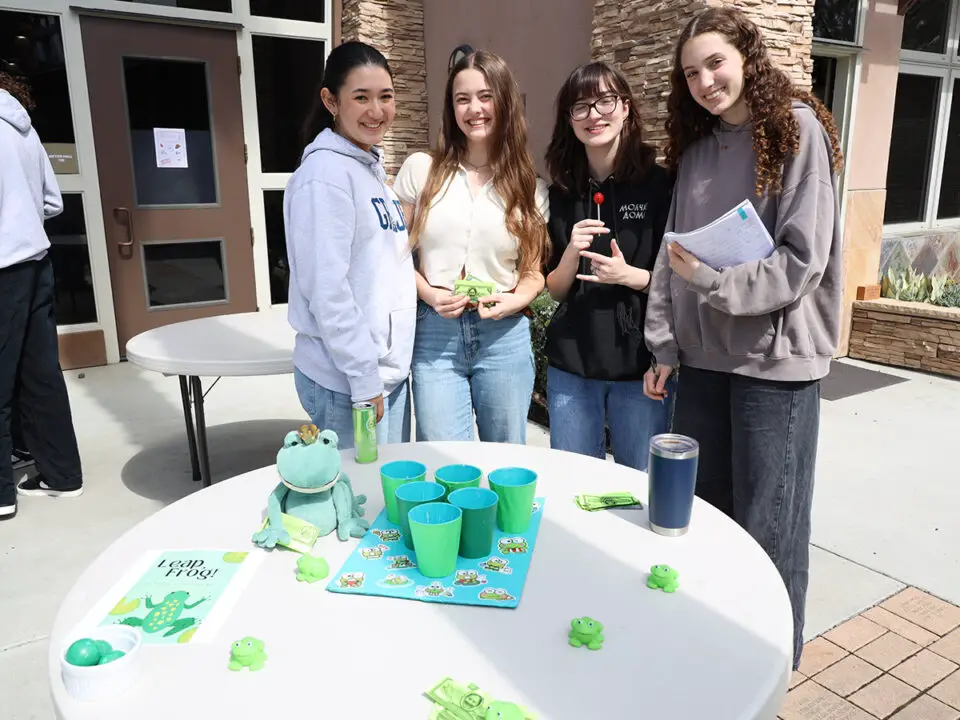ENCINITAS — As part of the probability and statistics unit, the pre-calculus class at The Grauer School, an independent school in Encinitas, created mathematically-based games for all students and teachers to try during the school’s recent annual carnival games event.
For over 10 years, pre-calculus students have designed, built and tested their carnival games as a project. Through their games, the students were tasked with demonstrating an understanding of the concept of discrete random variables by using them to solve for the probabilities of outcomes expressed as multivariable functions. Some of the games included a mechanical, varied speed spinning ring toss, a Plinko board and a cornhole game.
Aligning with Grauer’s green initiatives, all games were made of recycled or repurposed materials.
“Throughout the process, I loved watching my students’ eyes light up with confidence,” said Clayton Payne, pre-calculus teacher at The Grauer School. “It’s one thing to intellectually understand probability as a function of an independent variable or that The Law of Large Numbers means that what you expect might not happen in the short term, but out there playing a game, either raking in ‘Grauer Bucks’ or losing badly and reflecting on the data makes the curriculum real. It was quite the exciting way for them to learn by discovery.”

In preparation for the event, the pre-calculus students calculated the mathematical expectation of a combination of events, which gave them a first-hand experience of the mathematical work done in both the insurance industry and games of chance. Students used the tools in the Loewy-Linz Innovation Lab, often for the first time, to bring their games to life. Many students collaborated on their games with other students and faculty, particularly the physics, engineering and design, and robotics teachers.
“One of the reasons Grauer is so great is that it connects what we are learning in the classroom to real problems so that we can create real-life opportunities. This is a great example of that because it took our learning about probability and gave us a chance to see how probability works in real life,” said senior Emerson Mese-Gilbert. “The carnival games were so fun and an amazing learning opportunity!”
Before the games, students used the average probability of success from their testing phase to calculate the mathematical expectation of their game to find the average number of “Grauer Bucks” they could expect to make per player.
During the event, the students collected data each time their game was played. Afterward, they were asked to compare and contrast their results with their predictions, reflecting on any similarities or discrepancies.
“I feel like we got a taste of entrepreneurship in the sense that we had to work behind the scenes and see the data that goes into building a successful business, as well as trying to attract customers with prizes,” said junior Maya Pellegrino.




